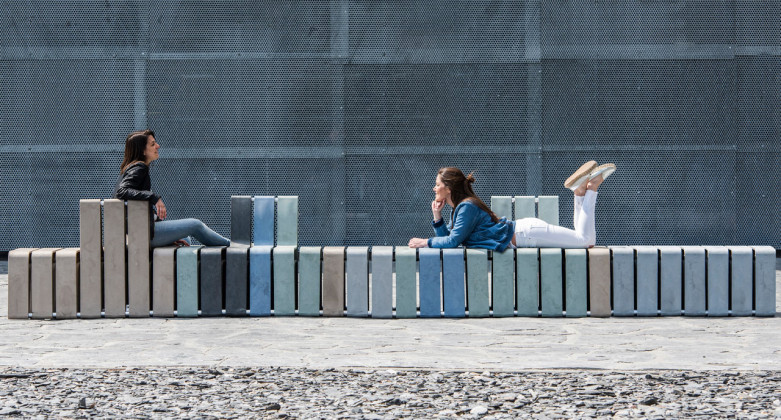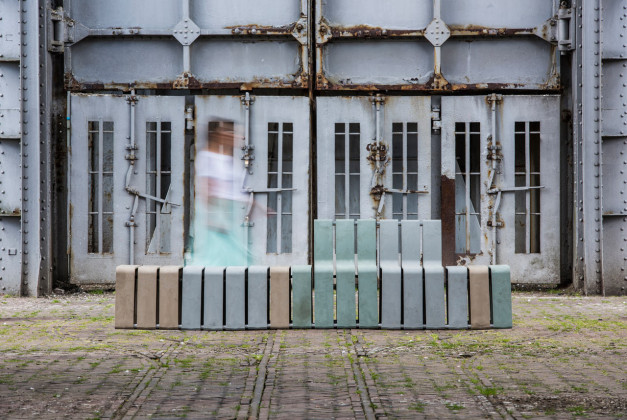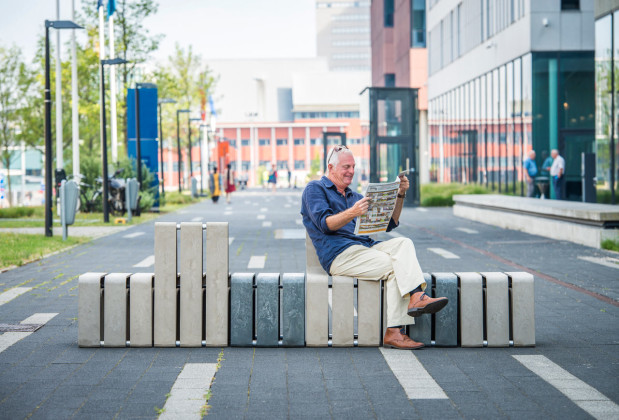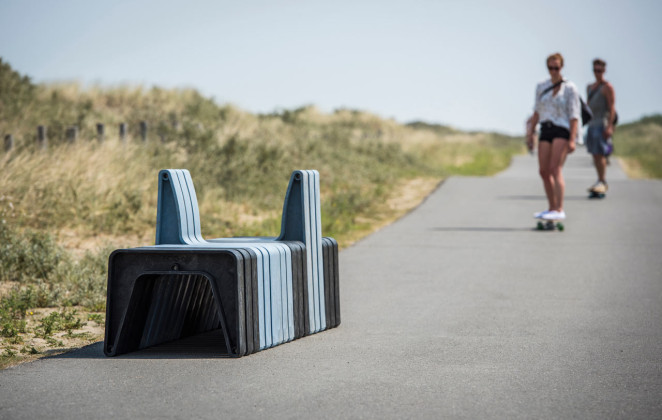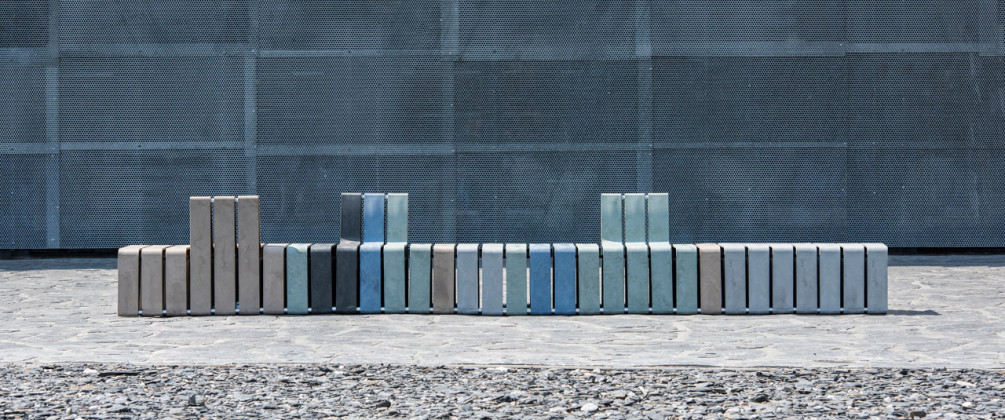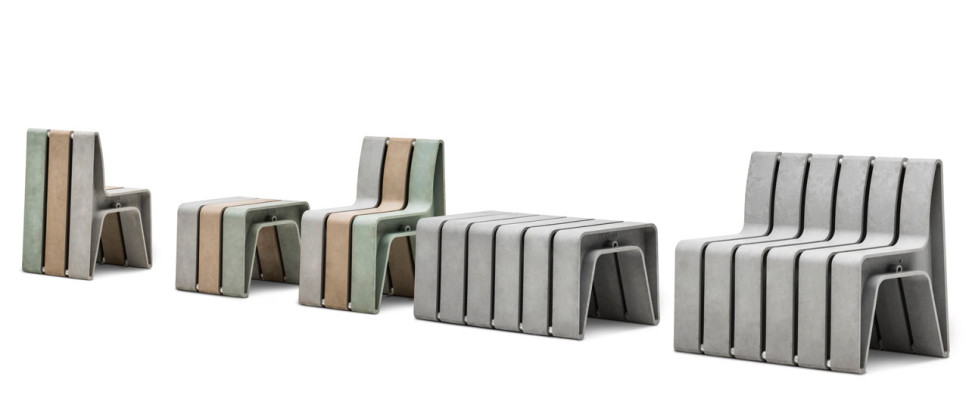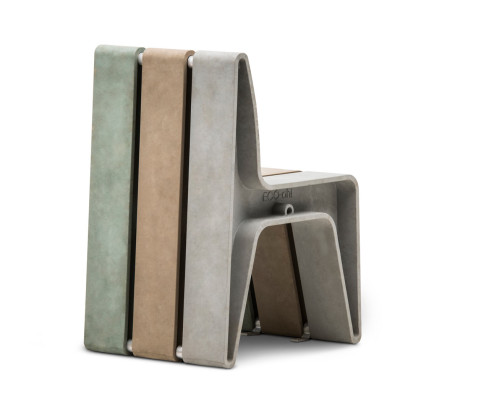Infinite Arrangements
Produced from recycled household plastic waste, H-bench aims to contribute to urban life as a social and ecological catalyst.
The H-bench is manufactured using polyolefins, which are extracted from recycled household plastic waste (yoghurt cups, butter tubs, plastic bags, etc.) and can be completely recycled again.
Plastic waste is first broken down into pellets and is then processed into stable building blocks using injection technology to create a seating landscape. The material is durable, colourfast, weather and wind-resistant, does not splinter, is low maintenance, and available in various colours, including dark grey (black), medium grey, light grey, pastel green, pastel blue, and beige.
The H-bench brings functionality, ergonomics, seating comfort, ecology, and economics together in a flexible, modular seating system. The concept consists of two elements, with or without a backrest. The elements can be connected to each other at three or four places using a simple connector system.
You can combine these two seating modules in infinite arrangements. The bench can be easily affixed to the ground using bolts. The backs can also be mounted across from each other, so that people can sit both next to each other and across from one another. These combination possibilities not only promote seating comfort, but also makes it fun and easy to talk with each other.
Public spaces support the complexity of the urban fabric and are increasingly bearing more of the weight of public life. The synergy between nature, culture, fauna, flora, and the human lifestyle must be encouraged. A well-designed public space that functions at a high-quality level is the driver of a city’s or town’s social life. The H-bench finds its way to squares, stations, public domains, schools, and fabulous spots all around the city. Relaxation, meeting new people, and communicating is of paramount importance to a healthy society. The H-bench seating concept is the ecologically responsible "glue" binding this social interaction.
 08.01.2018
08.01.2018



